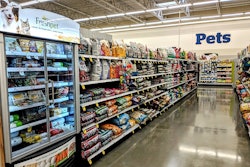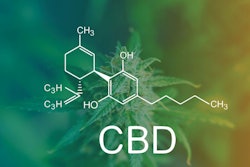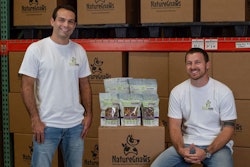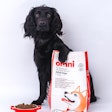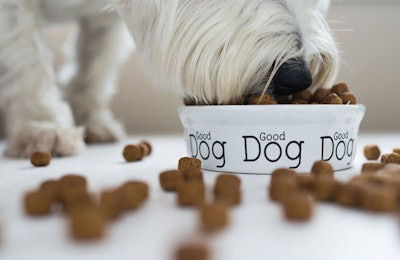
Two overlapping trends, both in full force for two decades, and both primarily marketing-driven, continue to frame the infusion of new products and services into the U.S. pet market: humanization and premiumization. Potent as these market drivers may be, they are now par for the course.
The shifting trend of natural pet food
For well over a decade, natural pet food has been the brightest star in the pet food firmament. In Packaged Facts’ Q1 2018 Pet Owner Survey, half of the owners agree that natural/organic brand pet products are often better than standard national brand products, and nearly a quarter (23 percent) strongly agree, a percentage that has risen since 2016.

FIGURE 1: Half of pet owners agree that natural or organic brand pet products are often better for their pets, with a significant minority somewhat or outright disagreeing with the statement when surveyed. | Studio_G, shutterstock.com
However, there is a gap between “natural,” an amorphous and highly marketable positioning, and organic, which is strictly defined by the U.S. Department of Agriculture (USDA). Organic remains a niche segment within pet food, with usage rates among dog or cat owners in the 2 to 3 percent range over the last decade.
The premiumization of mass market pet food
Though the “natural” star still shines brightly, its orbit is shifting, thanks in no small part to the formulation flexibility that marketers of natural-positioned pet foods enjoy. For the first time in years, mass channels appear poised to surpass pet specialty in pet food sales growth, a phenomenon that ties directly to premiumized, natural-positioned mass-market-based brands such as Purina One and Beyond, Mars’ new Crave, Rachel Ray Nutrish and numerous private labels.
Even as superpremium products continue to advance online and mass marketers and retailers face mounting pricing pressure, mass sales of superpremium/natural pet food should be robust as more grocery and mass-merchandiser shoppers trade up to brands which — while still priced higher than the former pet foods of choice — suddenly seem more affordable and accessible. The pet specialty channel, in response, will need to further differentiate.
The current challenges of the grain-free trend
Another turn of the screw relates to grain free. For several years, grain-free pet food has been a primary driver of superpremium pet food sales in the pet specialty channel, and therefore of pet food sales overall, and grain-free formulations are now also widely available online and in mass channels.
But a recent report from the U.S. Food and Drug Administration (FDA) casts a cloud of uncertainty over their future. In July 2018, FDA issued a warning to pet owners and veterinarians that it is investigating reports of canine dilated cardiomyopathy (DCM) in dogs eating certain pet foods containing peas, lentils, other legume seeds or potatoes as main ingredients, noting that “high levels of legumes or potatoes appear to be more common in diets labelled as ‘grain free,'” while conceding that “it is not yet known how these ingredients are linked to cases of DCM.”
This development calls up another market tension related to grain-free pet food: while grain-free makes sense for cats, who are more strictly carnivores, it has primarily been deployed in pet foods for dogs, who over the course of millennia have adopted some of the omnivore-ism of their agriculturally fueled human companions. Moreover, despite the phenomenal marketing-driven success of grain-free foods, there is scant scientific backing for the nutritional superiority of grain-free formulations, and many veterinarians remain skeptical at best.
The next stage of pet food trends
In defining the next stage of pet food innovation, and moving beyond established humanization and premiumization trends, marketers will want to think not only outside of the box, but outside of the bag or can. Premium pet food formulations have hitched their wagons to human food trends in redefining what “best quality” food means: natural, whole, fresh foods. But innovators will also need to look to broader issues including sustainability, the role in pet food ingredient sourcing in local economies and food systems, and the welfare of animals raised for food.
Packaged Facts’ Pet Food in the U.S.
https://bit.ly/2PNH3T5
The latest pet food market insights
www.PetfoodIndustry.com/authors/145



